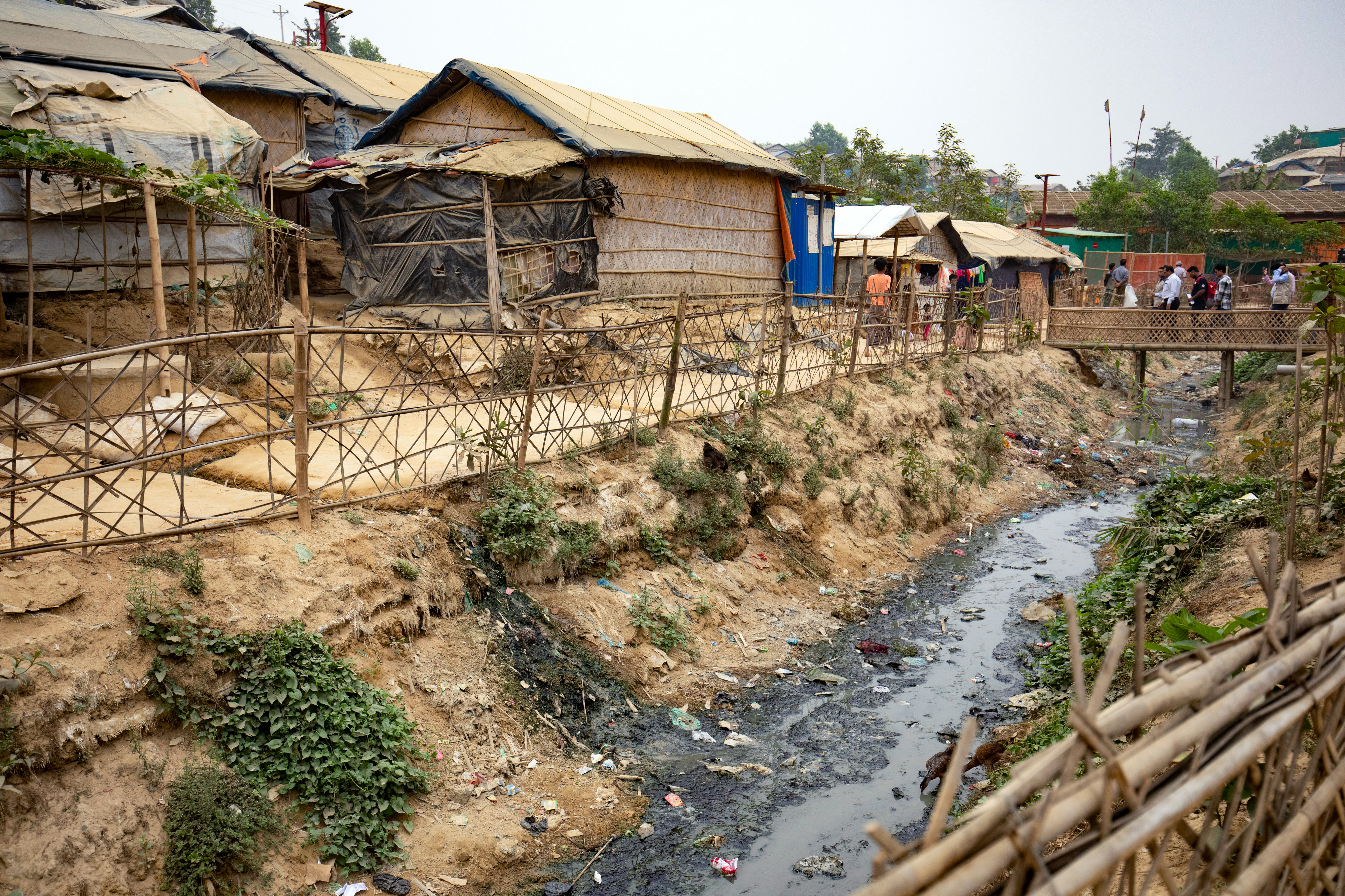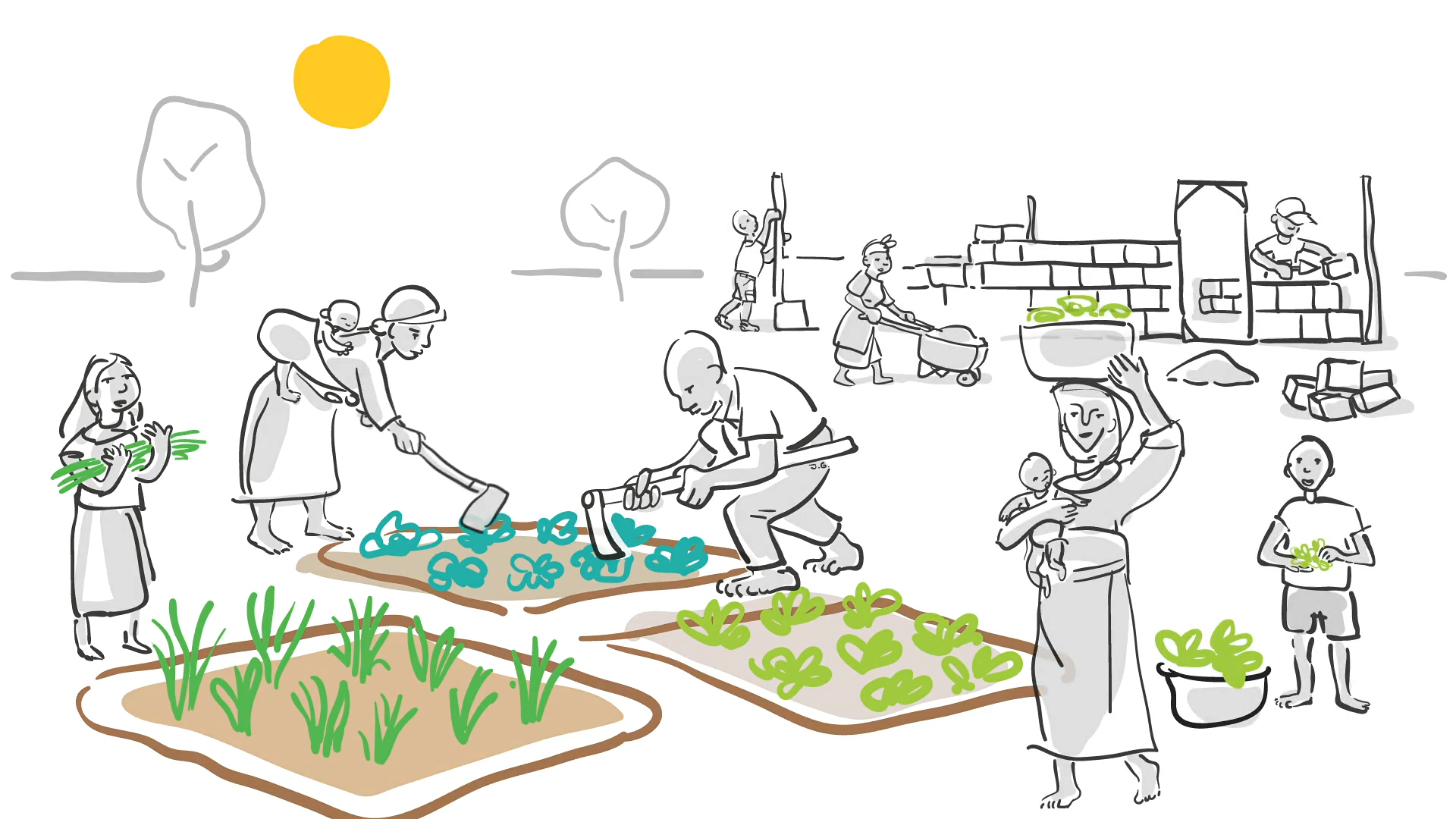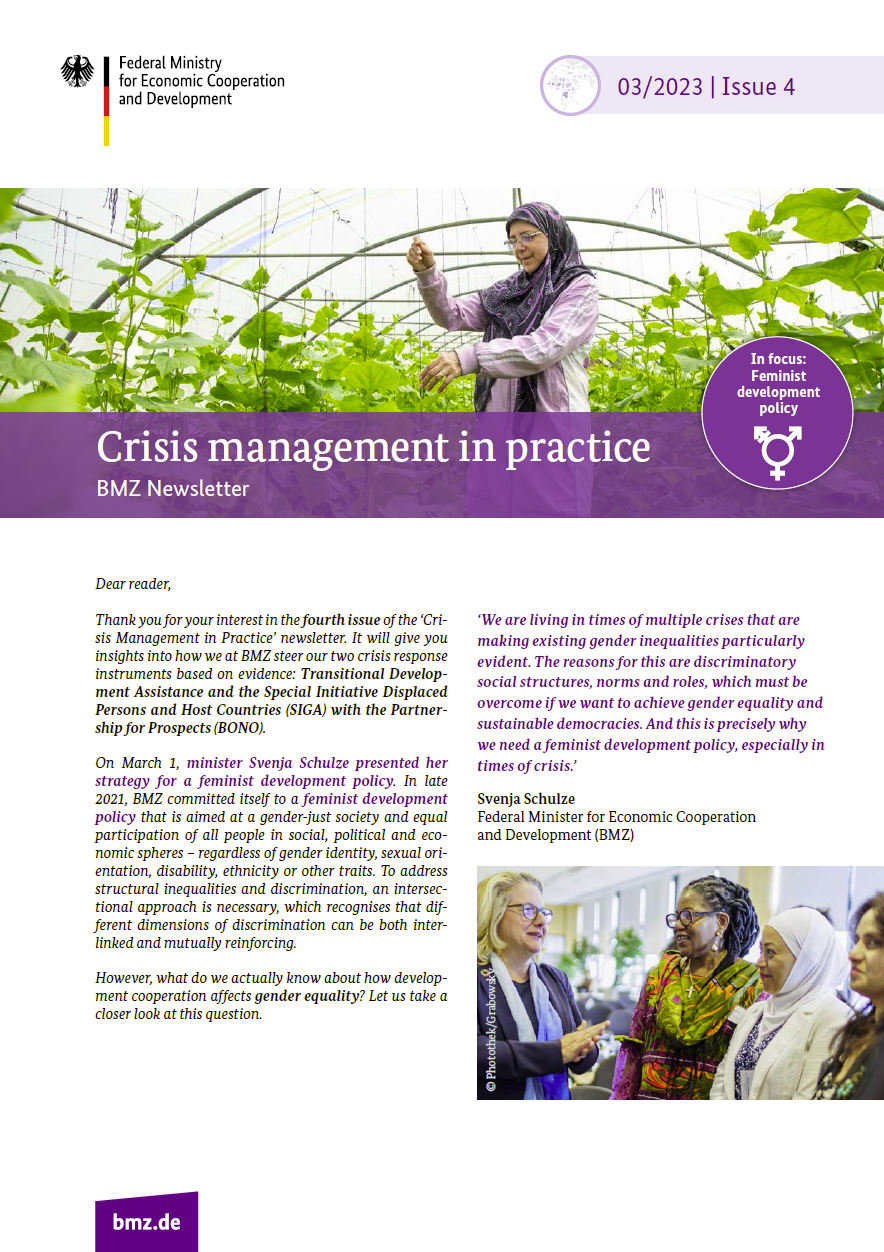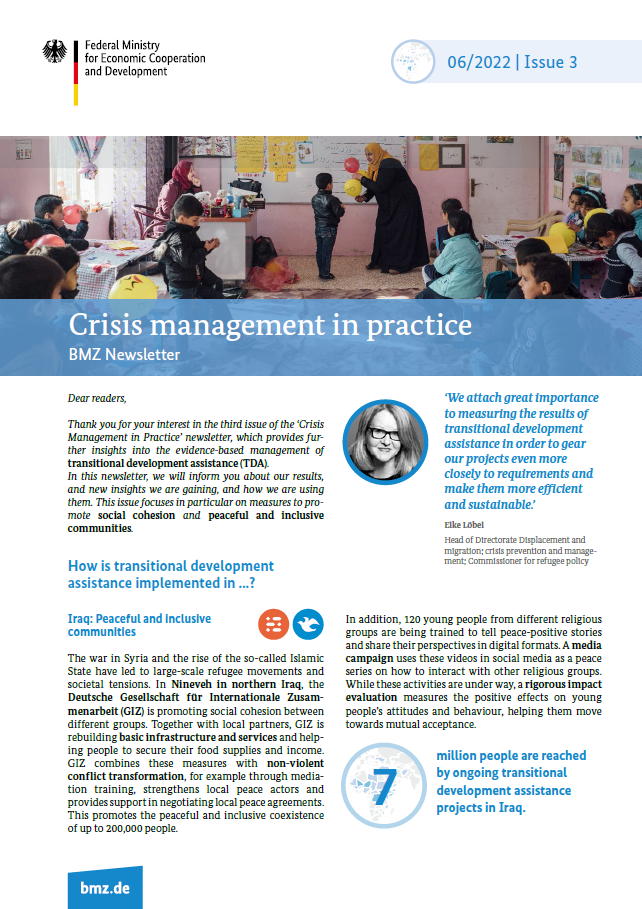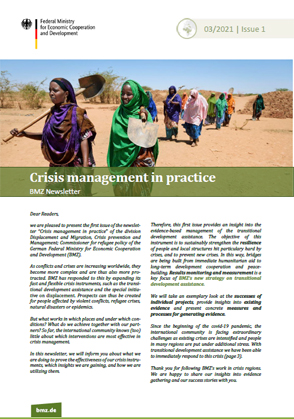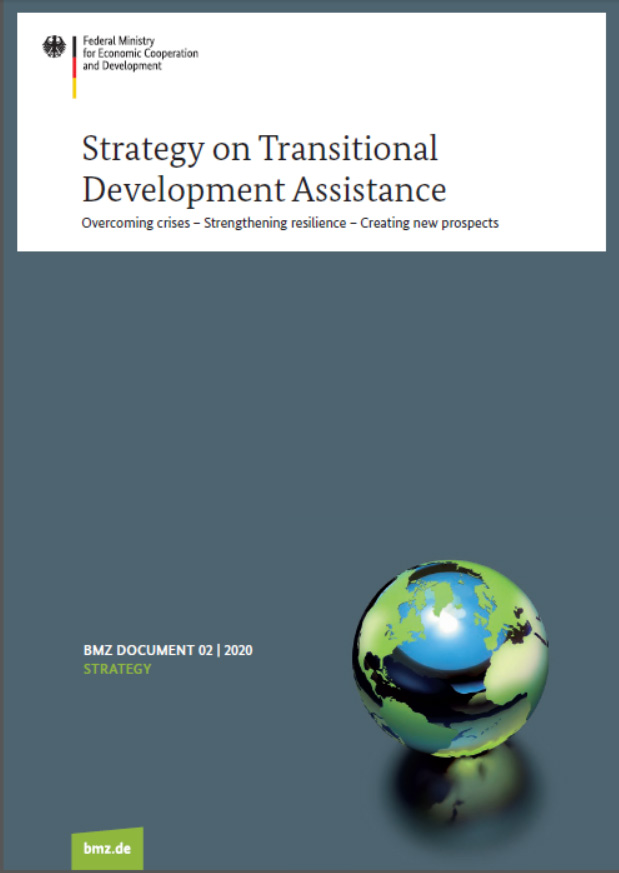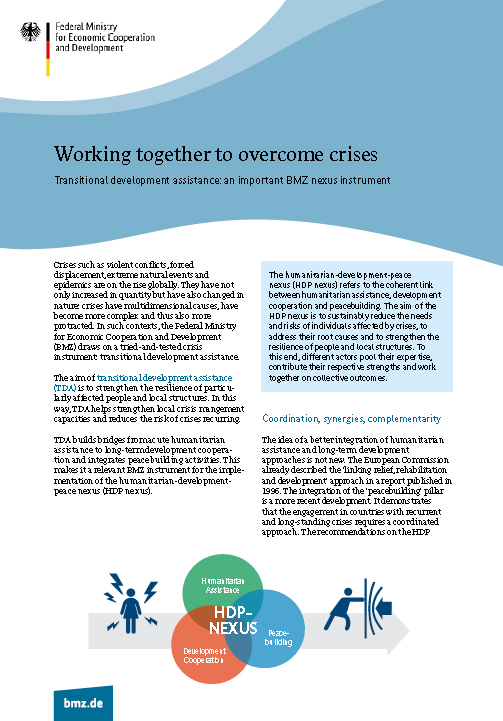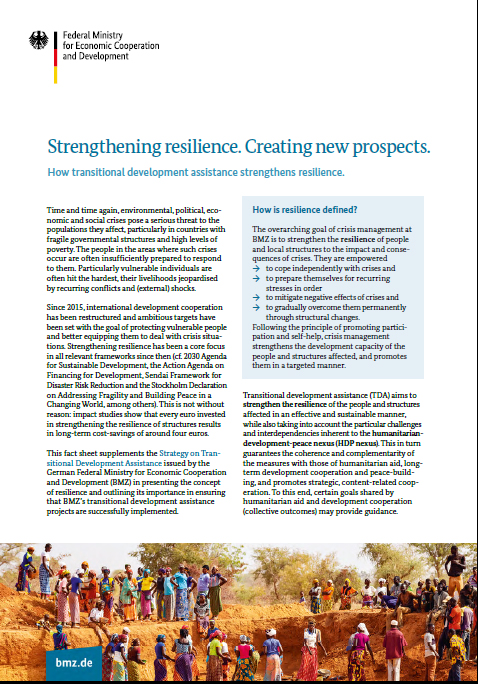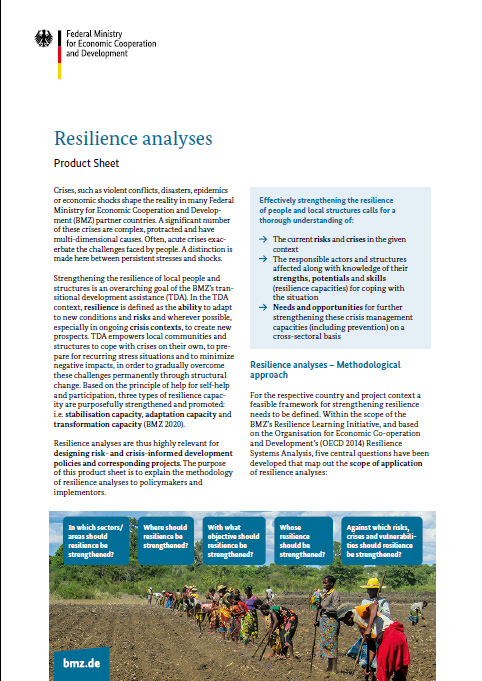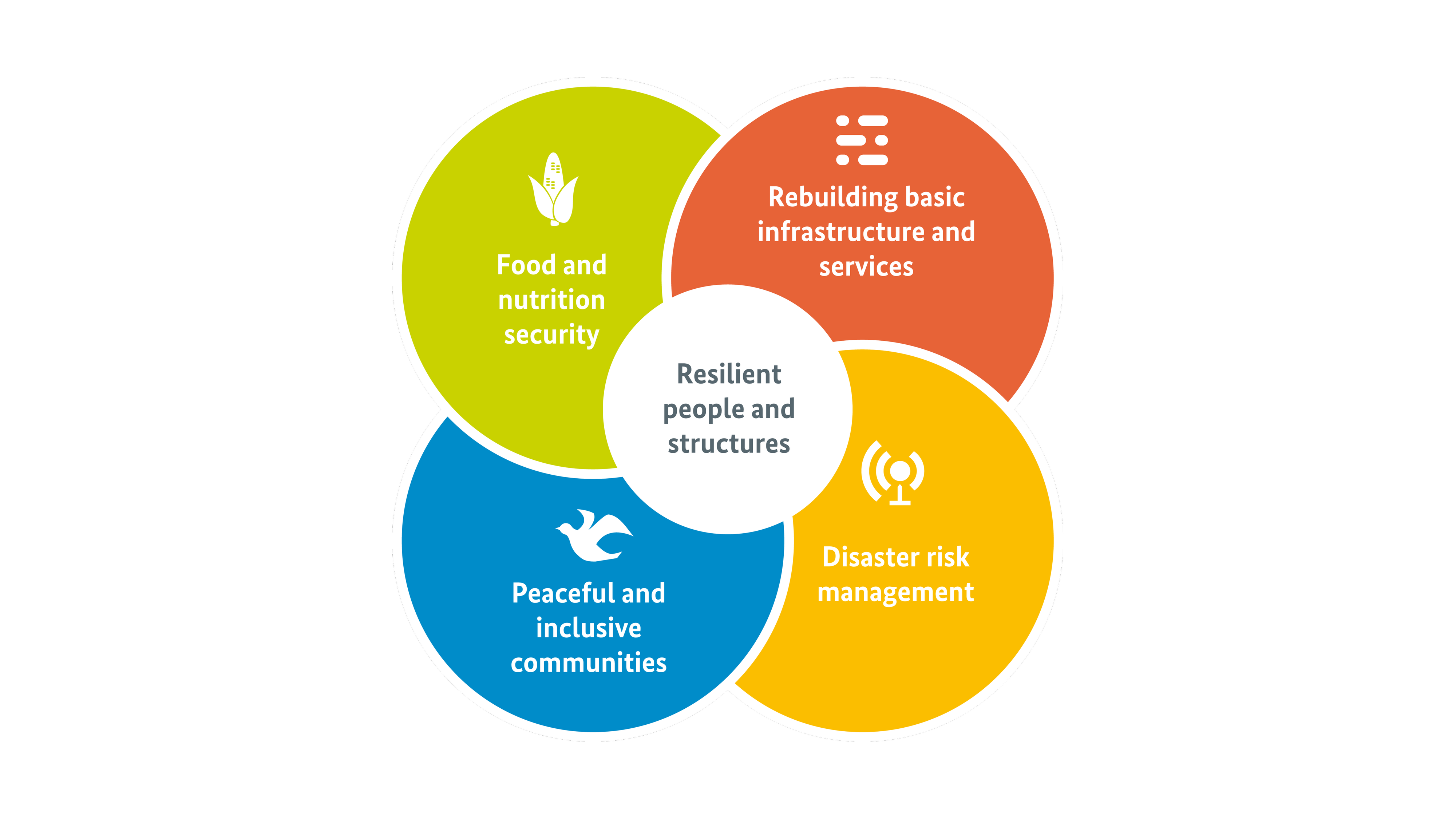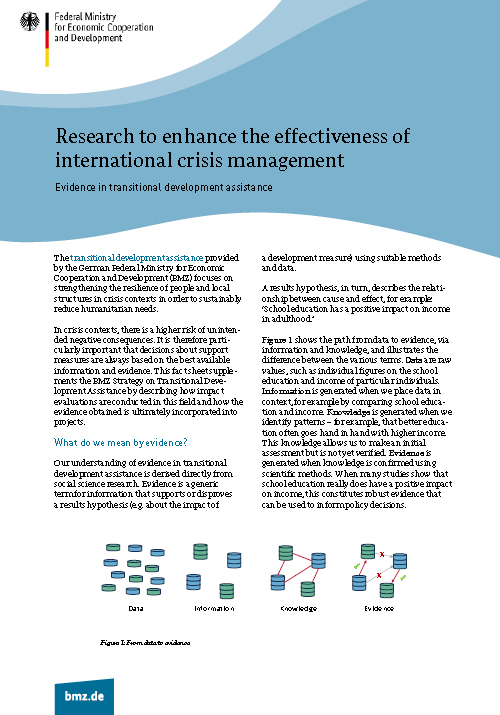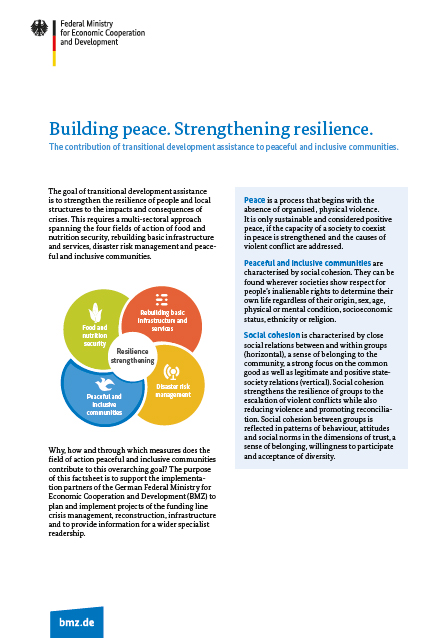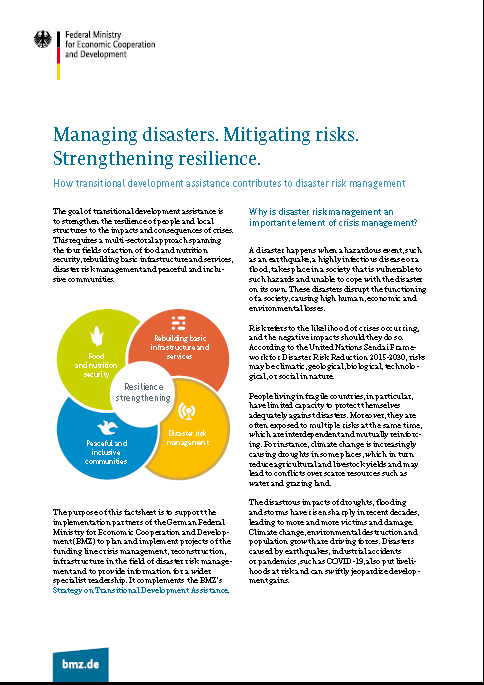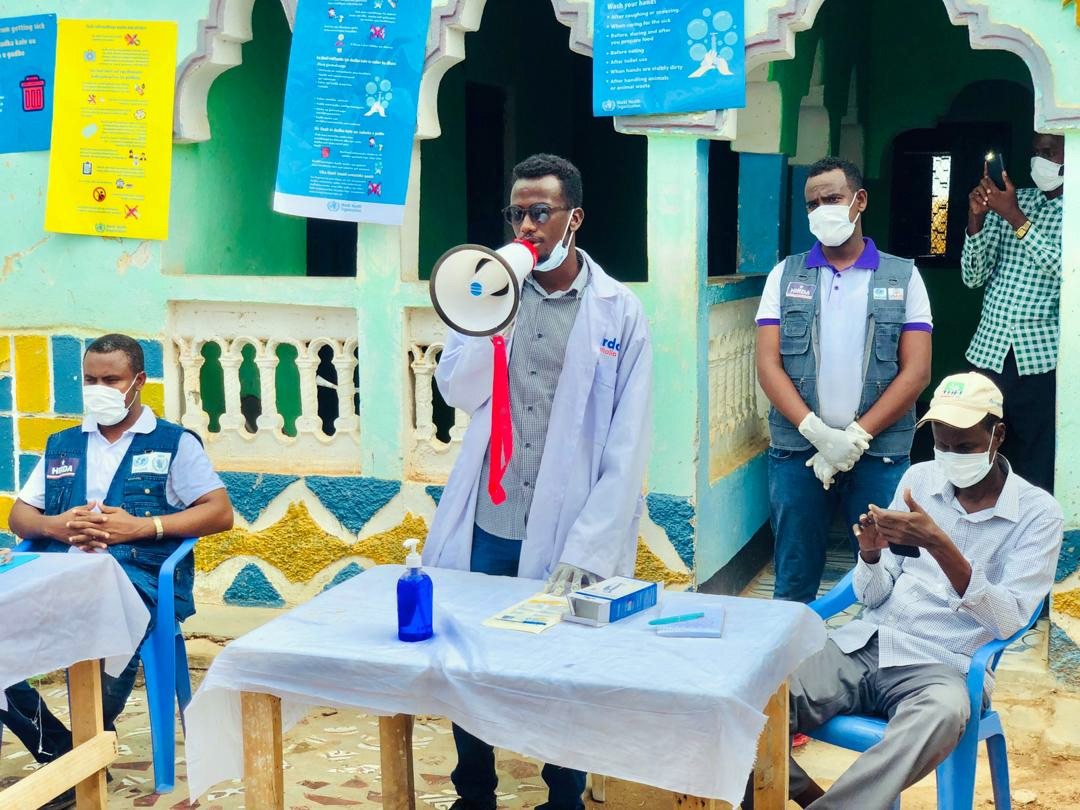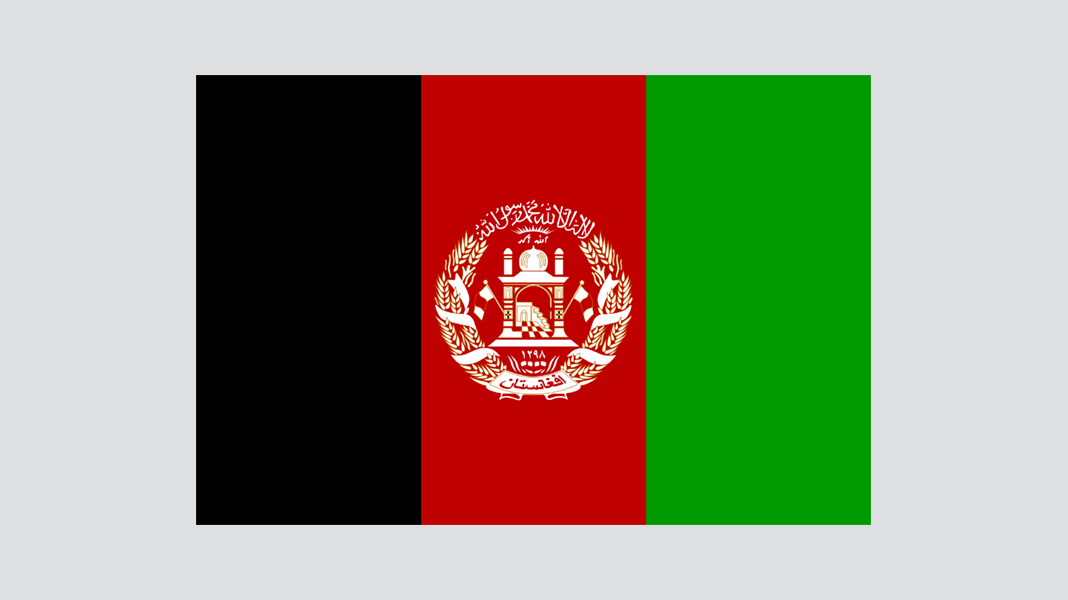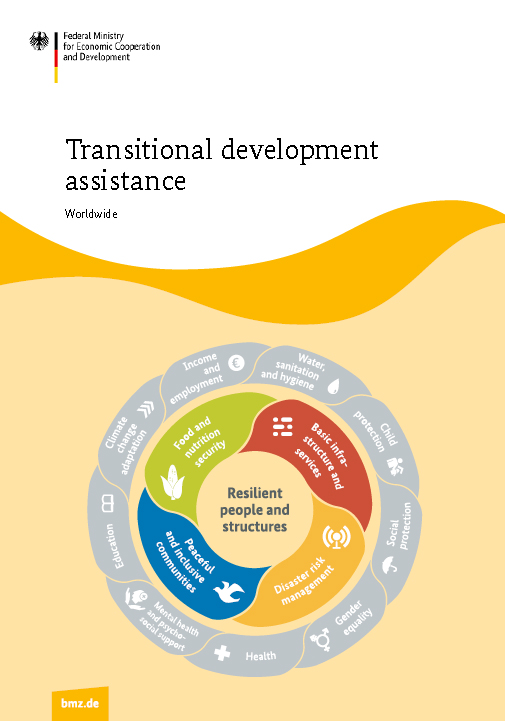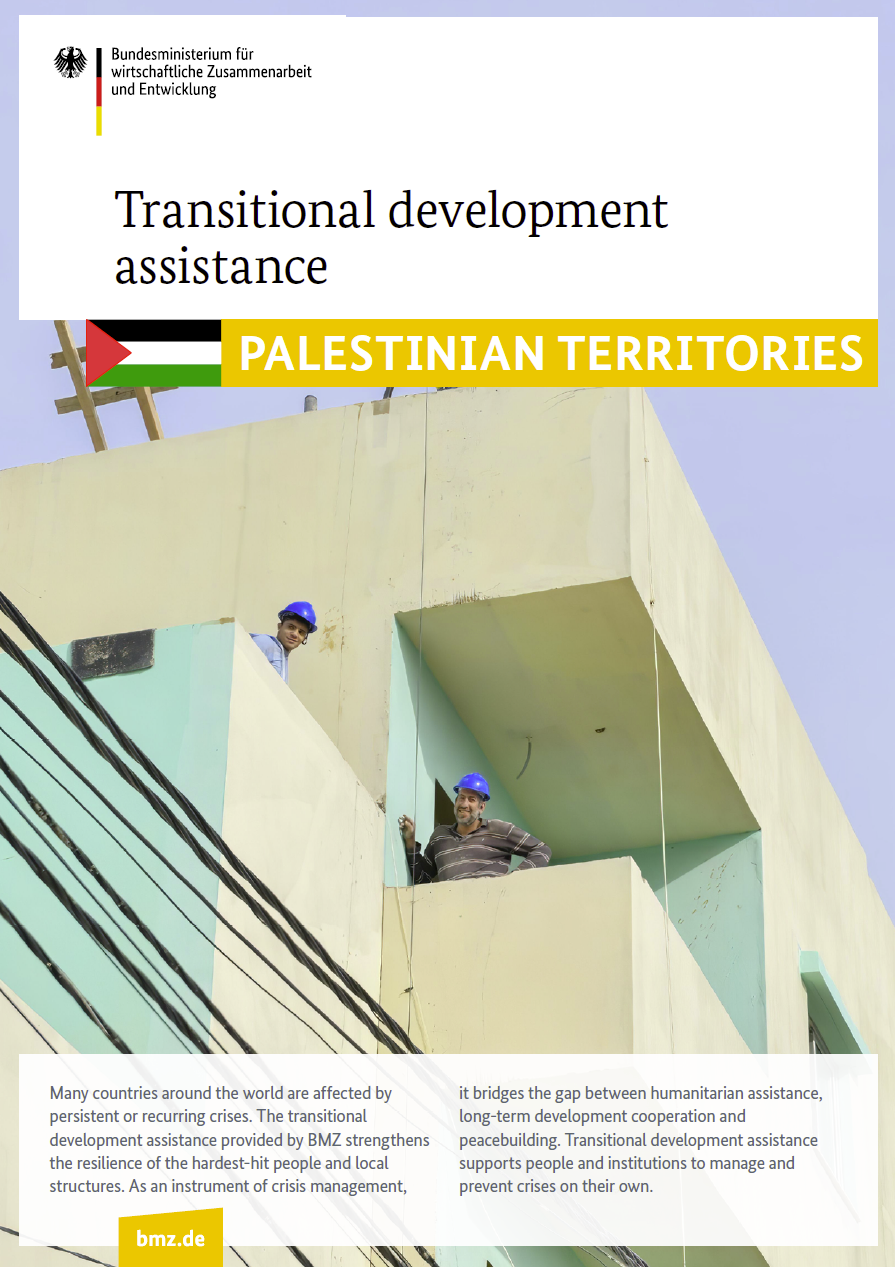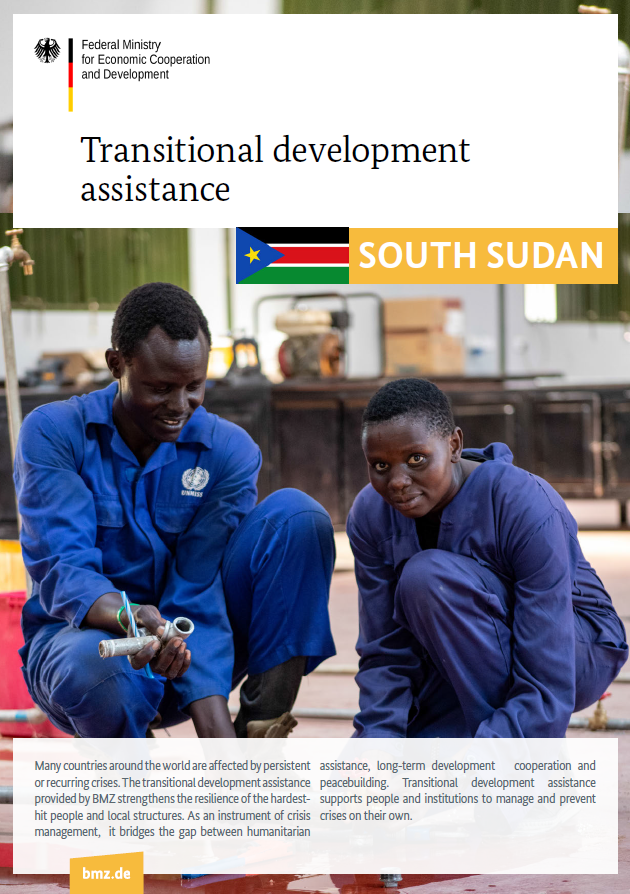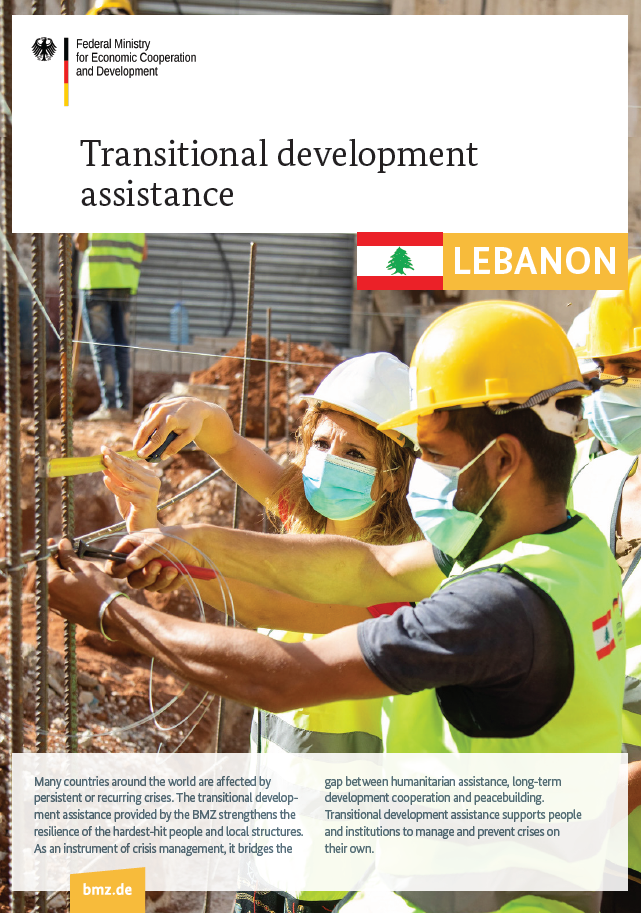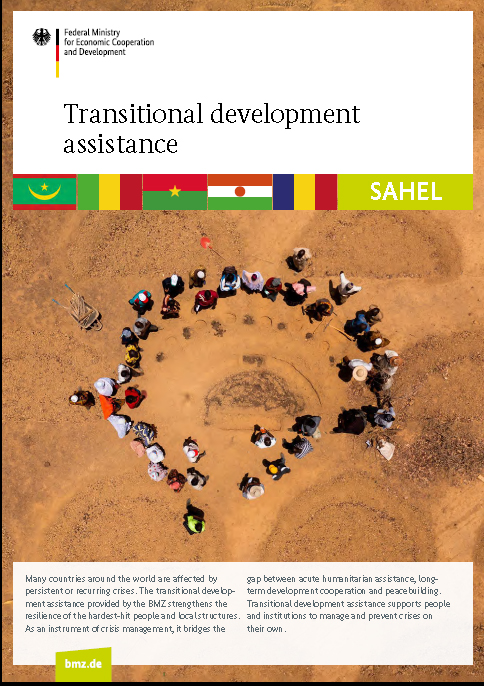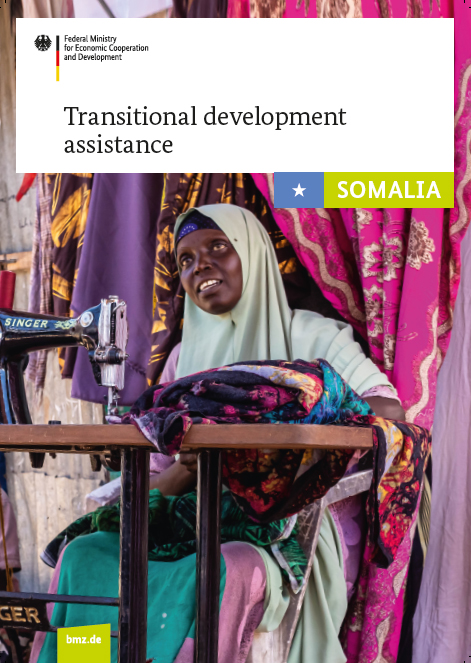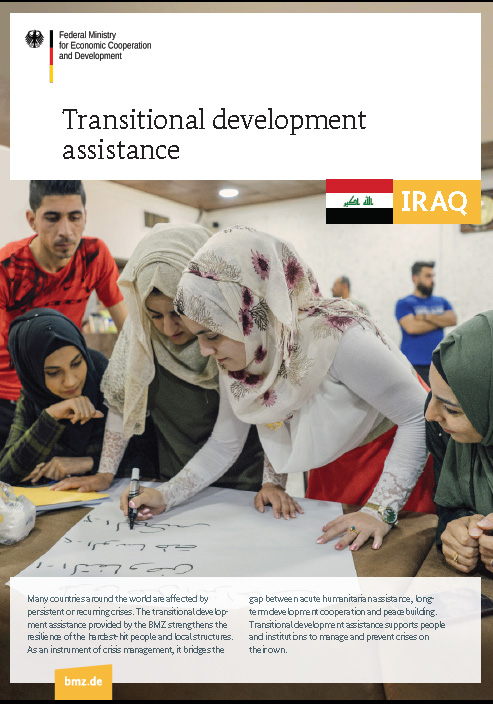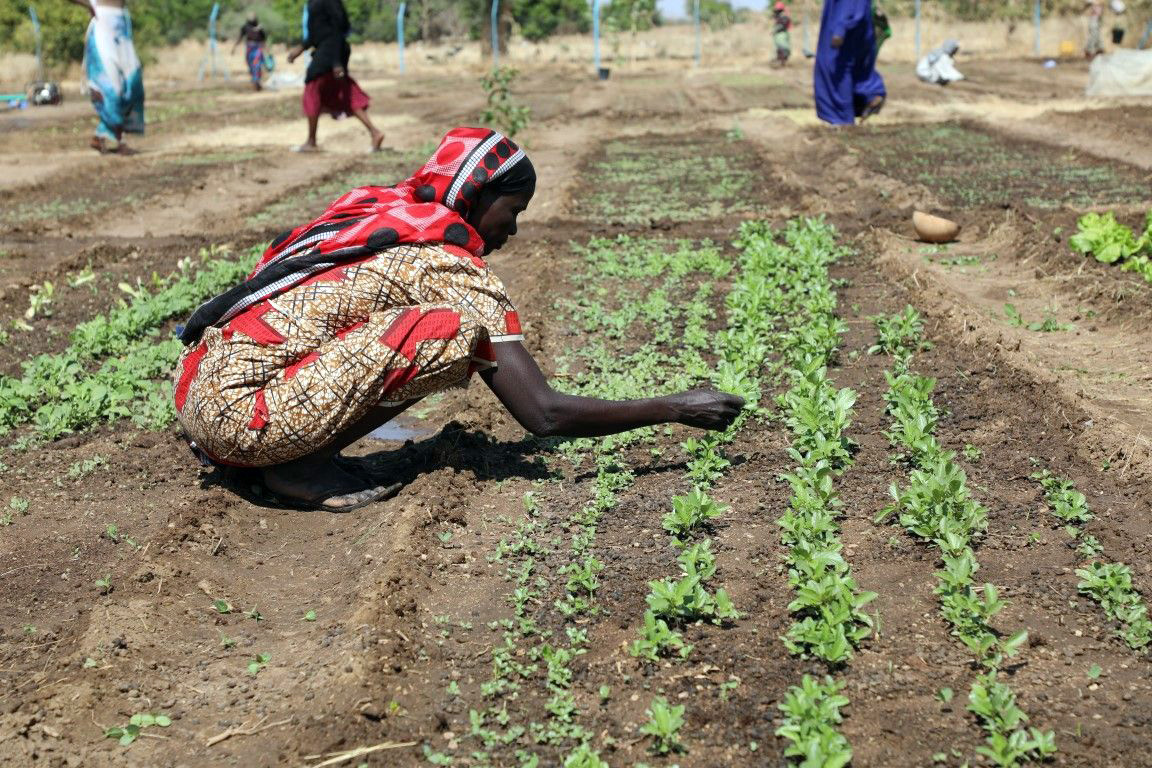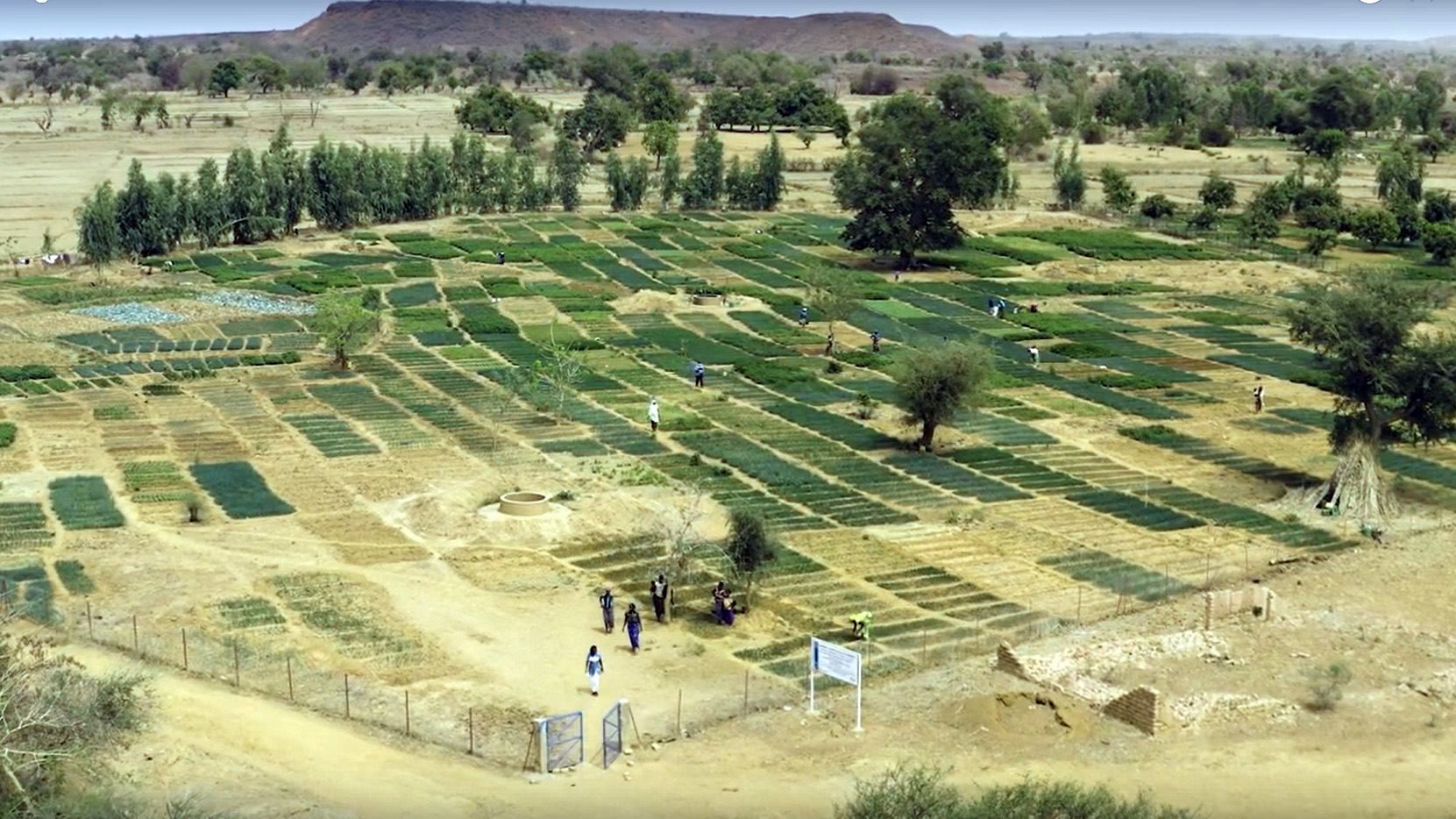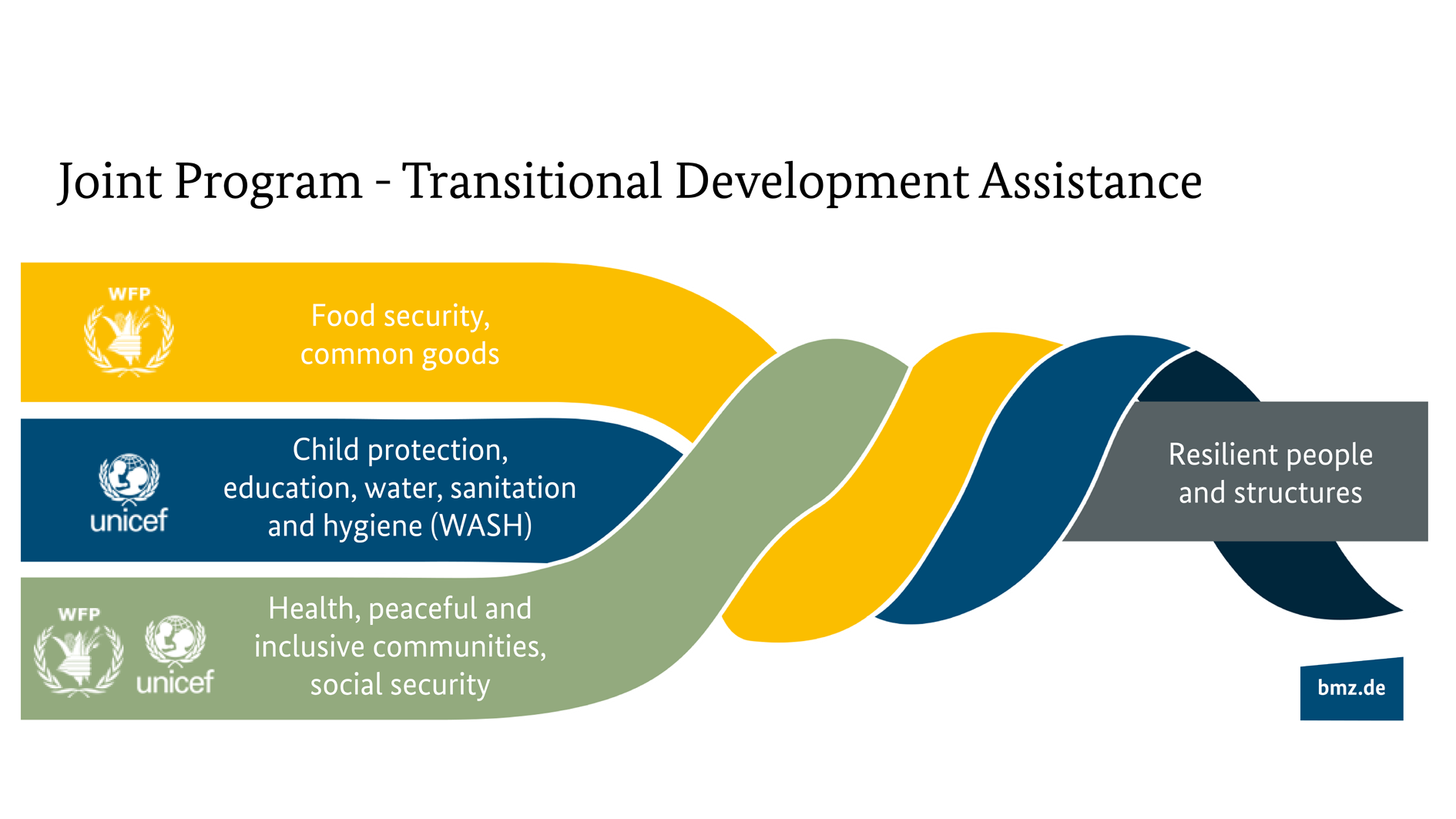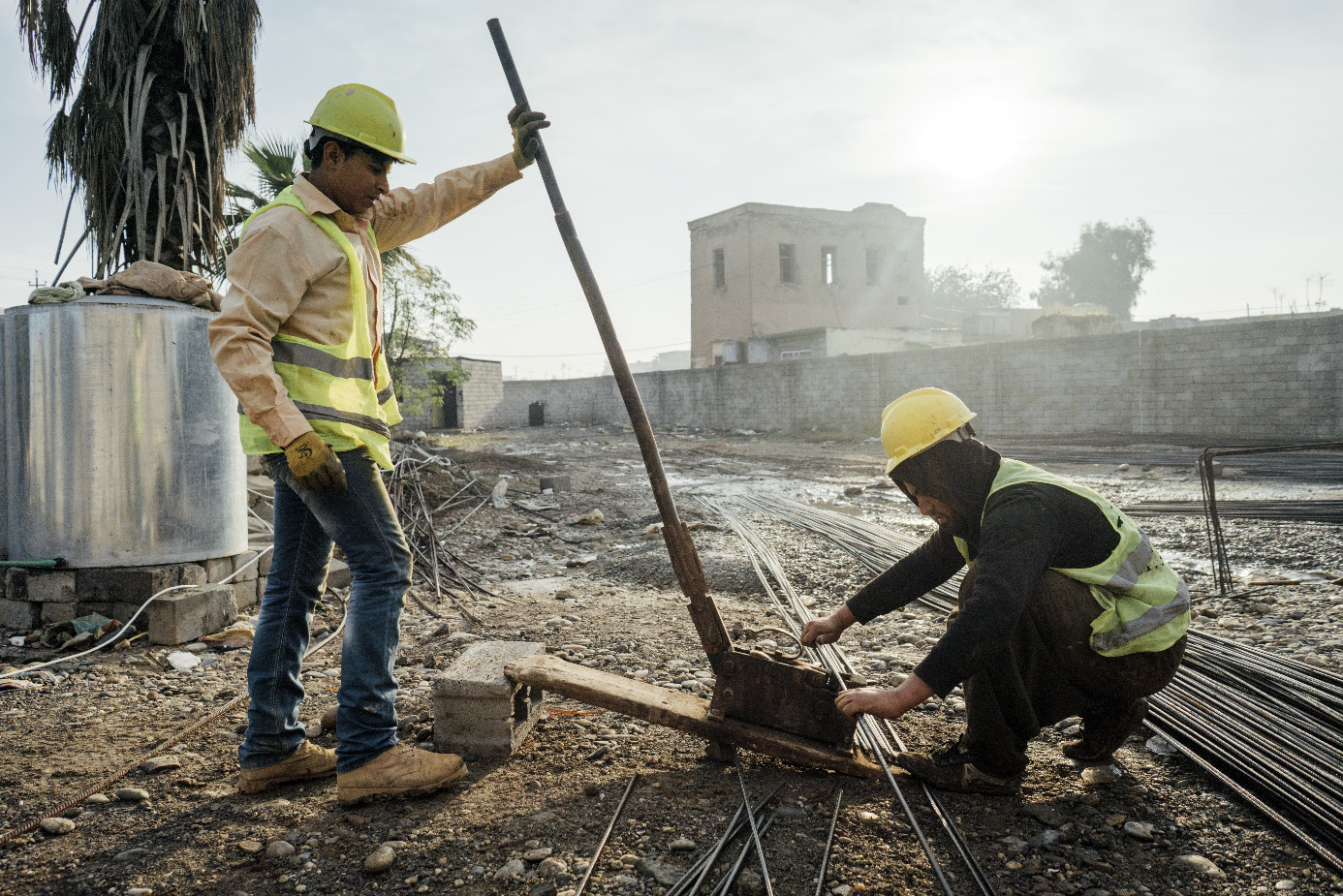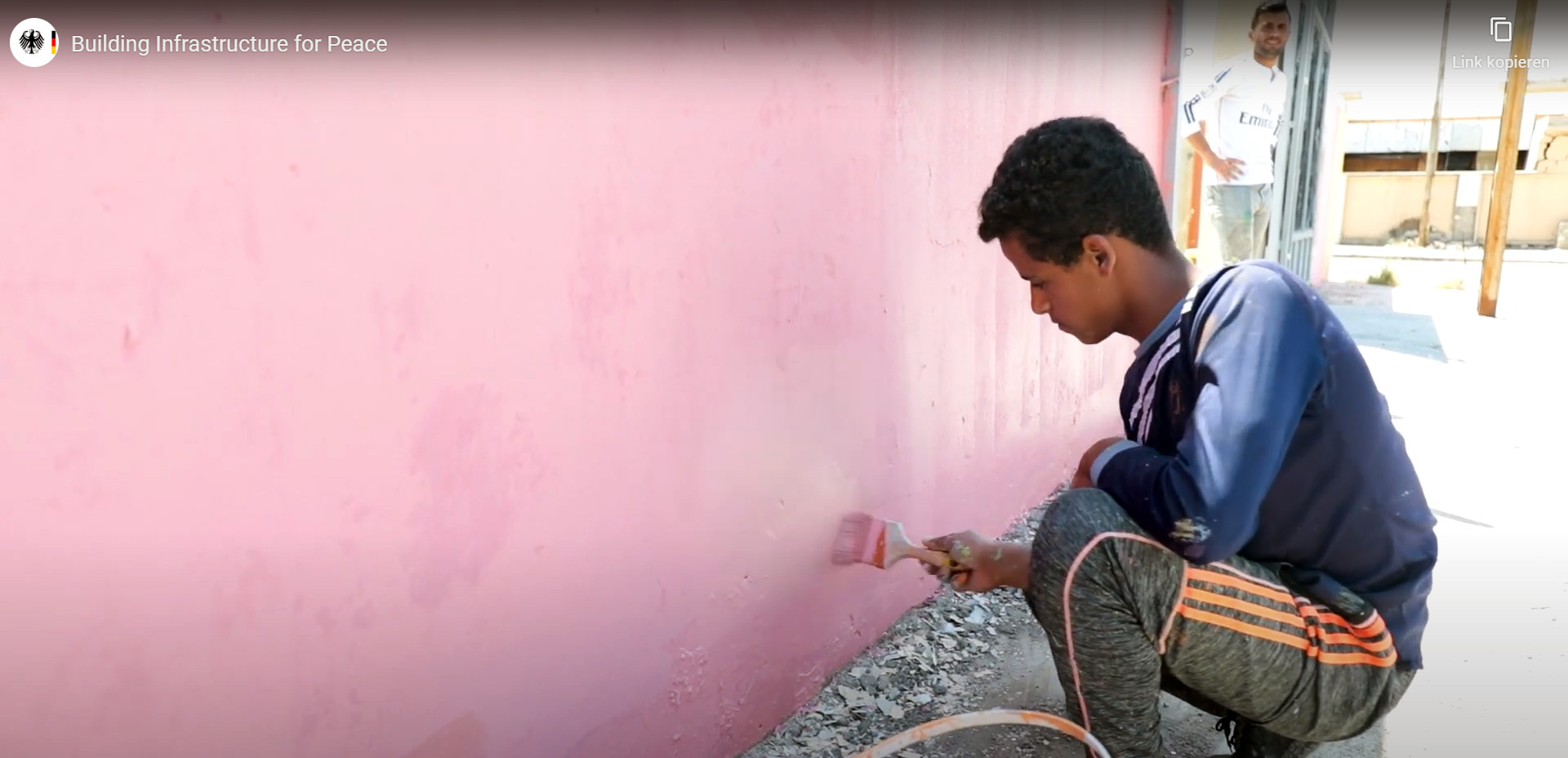View of a ditch in the Kutupalong refugee camp, Cox Bazar in Bangladesh
Copyright© Ute Grabowsky/photothek.net
Transitional development assistance Overcoming crises, strengthening resilience, creating new prospects
Poor population groups in particular are often defenceless in the face of violent conflicts and natural disasters. When their livelihoods are destroyed they are often unable to rebuild them without assistance. In addition, the governments in the affected regions often lack the will or the capacity to protect the people and facilitate reconstruction. The impacts can also spill over into neighbouring countries, for instance when they result in a refugee influx.
In such contexts, the BMZ draws on a quick and flexible instrument for recovery, namely: transitional development assistance. Its purpose is to help strengthen the resilience of people who are particularly hard hit and of local structures in a sustainable way so that they will be able to deal with existing crises themselves and reduce the risk of new crises. Transitional development assistance thus makes an important contribution to crisis prevention.
The new strategy on transitional development assistance, which was published by the BMZ in July 2020, lays out a clear and internationally recognised strategic framework for continuing to respond to the diverse challenges of the multidimensional crises around the world.
BMZ strategy papers
What do we want to achieve? Promoting reconstruction and peaceful coexistence, reducing poverty
The transitional development assistance provided by the BMZ creates links between short-term humanitarian assistance and long-term development cooperation and also makes a contribution to peacebuilding. This close dovetailing ensures that even the very first support measures promote social recovery and peaceful coexistence in a sustainable manner and reduce poverty. It is the only way for people to be able to improve their prospects by their own efforts and not be repeatedly dependent on external help.
Transitional development assistance always builds on existing structures and the knowledge of the people on the ground and is implemented in cooperation with experienced partners. That includes German non-governmental organisations, the Deutsche Gesellschaft für Internationale Zusammenarbeit (GIZ), KfW, the United Nations Children's Fund (UNICEF) and the World Food Programme of the United Nations (WFP).
The BMZ sets out binding rules for its partner organisations, thus creating a framework for their work and ensuring the effectiveness of its transitional development assistance.
In order to address crises effectively transitional development assistance focuses on four key areas:
- Food and nutrition security
- Rebuilding basic infrastructure and services
- Disaster risk management
- Peaceful and inclusive communities
Transitional development assistance is rooted in a comprehensive approach that links different areas so as to improve the livelihoods of affected people as effectively as possible.
Practical examples of transitional development assistance | COVID-19 pandemic Rapid response to current crises
In Somalia, the population is being informed about the coronavirus through awareness campaigns.
In crisis contexts, the Corona pandemic has sometimes had particularly catastrophic effects and continues to pose an existential threat to the livelihoods of many people.
The BMZ’s transitional development assistance provides rapid and flexible support to reduce the spread of the virus and to mitigate its negative consequences.
The implementing partners of transitional development assistance are adapting their programmes in the four fields of action to the pandemic situation and the respective local contexts.
They are building capacities in the health sector, training specialised personnel, disseminating information through campaigns, securing training and income opportunities, and ensuring access to water, sanitation, and hygiene services. Since the beginning of 2020, partners have also been able to use their funds in particular for this purpose.
Transitional development assistance aims to prevent the negative consequences of the pandemic and enables people to adapt to the situation. The measures support local structures and sustainably strengthen the resilience, in particular of mothers, children, displaced people, host communities and other affected persons.
Regional focus
Transitional development assistance is mainly employed in countries affected by multiple crises and where the state on its own is incapable of supporting the people and communities affected by crises and disasters. It is engaged primarily in countries in the Middle East, East and Central Africa and the Sahel region.
The following factsheets provide more specific insights into the transitional development assistance and show how and why the BMZ supports crisis management in countries of these regions. Why, for instance, is transitional development assistance being implemented in Iraq, Somalia or the Sahel region? What are the local communities’ needs and how are they being met?
Factsheets on the regional engagement
German and French versions
Practical examples of transitional development assistance | Food security Achieving food security and creating income opportunities in the Sahel region
In Chad, the local population is supported by the Sahel Resilience Initiative of WFP and BMZ in growing vegetables needed for children's school meals.
The Sahel faces political instability, ongoing conflicts and violence, hunger, poverty, population growth and the effects of climate change such as droughts and water scarcity.
The World Food Programme (WFP) implements in Mali, Mauretania, Burkina Faso, Cha, and Niger Mauretania a programme to sustainably strengthen people’s food security and livelihoods. The programme provides school meals for children, job opportunities for the youth and improves the nutrition and health of pregnant and breastfeeding mothers. Moreover, land is being rehabilitated and agricultural production is adapted to droughts.
Jointly with WFP, the United Nations Children's Fund (UNICEF) supports children and young people. They improve their nutrition, education and access to water and sanitation and child protection in Mali, Mauretania and Niger.
Three million people have benefitted from the resilience programmes.
Video: Insights into the Sahel programmes
Example Niger Jointly strengthening peaceful and inclusive communities
The joint programme in Niger by the World Food Programme (WFP) and the United Nations Children’s Fund (UNICEF) of the United Nations strengthens people’s resilience and promotes social cohesion.
Attacks by the Boko Haram militia, weak state institutions and intensifying conflicts over natural resources are leading to hunger, insecurity, and displacement in Diffa in Niger. Social ties within families, between generations and ethnic groups have been severely strained or torn apart by violence, extreme poverty, and human rights violations.
The World Food Programme supports communities in improving their access to land and water resources, for example through restoring cultivable land and irrigation systems. Meanwhile, UNICEF supports communities in health care, family planning and nutrition for their children, for example by distributing nutritious food. Girls additionally benefit from cash transfers which provide for their basic needs. This enables them to go to school instead of working at home to support their families. In the joint programmes, the population groups help plan services in their community. The programme supports young people to engage in intergenerational dialogues that promote peace.
Graphic: Example of a joint programme of the World Food Programme, UNICEF and BMZ in the context of transitional development assistance.
BMZ’s transitional development assistance increasingly commissions United Nations organisations with so-called “joint programmes”. The Food and Agriculture Organization of the United Nations (FAO), the United Nations High Commissioner for Refugees (UNHCR) and local partners also contribute their expertise and experience. These complement each other and enable synergies. In the joint programmes, measures from different sectors are linked with each other to increase the sustainability of the programmes.
Practical examples of transitional development assistance | Inclusive living Developing infrastructure and promoting peaceful communities in Iraq
In northern Iraq, the reconstruction of destroyed infrastructure and peaceful and inclusive coexistence are being promoted.
The Syria crisis and the expansion of the so-called Islamic State led to a massive influx of refugees into northern Iraq. More than 1.4 million internally displaced persons and some 235,000 refugees from Syria are pushing the infrastructure of host communities to its limits, making it impossible for everyone to be provided for at the same time. Thanks to transitional development assistance both the refugees and local communities now have improved access to safe water, basic medical services and psychosocial counselling. More than seven million people are benefiting from these measures. Support is also being provided to returnees to help them develop new prospects in destroyed areas that have been liberated from the so-called Islamic State. Schools and hospitals, for instance, are being rebuilt and support is being provided to revive agricultural production.
The comprehensive approach of transitional development assistance also includes measures to reduce the risk of conflict between local people and refugees. The measures contribute as well to promoting peaceful communities and dialogue between all the religious and ethnic groups in the region. This approach follows the recommendations of the World Bank's Building for Peace report.
The examples show that the BMZ's transitional development assistance focuses not on the weaknesses but on the strengths of people and institutions. It safeguards livelihoods, creates opportunities, and promotes peaceful and inclusive coexistence.
